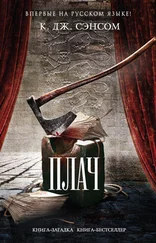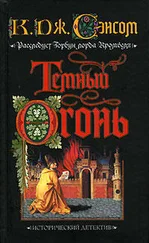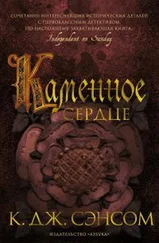With troops drawn up, a final offer of pardon was made (perhaps because of the looming fate of the gentlemen) but instantly rejected. Battle was joined, first blood going to the rebels when Gunner Captain Miles shot and killed Warwick’s standard-bearer. The chained gentlemen managed somehow to escape and run away. 7
It is important to stress that Dussindale seems to have been a narrow victory. It lasted from early morning until around four in the afternoon. 8Rebel prowess was admired by Warwick’s son, who later wrote, ‘the battle was so manfully fought on both sides, it could hardly be judged which side was likely to prevail.’ It involved savage, close-quarter fighting, until the rebel lines were finally broken and large numbers fled, being pursued and cut down by Warwick’s troops. Kett himself fled the field. However, a large body of rebels, seeing the others cut down, continued fighting for some time behind makeshift defences until Warwick himself came and granted a pardon. 9
THE AFTERMATH
Neville estimated there were 3,500 dead at Dussindale; Edward VI’s Journal gives 2,000. Vengeance on the rebel leadership was swift and harsh. The following day trials under martial law were held, and nine leading rebels were immediately hanged, drawn and quartered for treason at the Oak of Reformation. Many others were hanged. Heads were set on poles around Norwich, as I described in Tombland . 1Meanwhile the earl ordered the bodies of the slain to be buried. The bodies were stripped, in accordance with the practice of the time, and the rebels’ property was afterwards sold in Norwich Market. 2This implies that somewhere under the battlefield, now part of suburban Norwich, there may lie mass graves containing the bodies of those slain at Dussindale. At a guess, these would have been buried six feet down, deeper than the twentieth-century foundations of the modern houses. There may be nothing left but bone; it would be interesting to know if advances in forensic archaeology may allow these to be traced.
Robert Kett, meanwhile, was captured some miles away; his brother William was also taken. For the time being they were held in the Guildhall prison. The rulers of Norwich celebrated victory with a church service and possibly a masque on the 28th (an annual church service at St Peter Mancroft church was to continue until 1667). Dudley’s emblem of the bear and ragged staff was set over the city gates.
Many of the now freed gentlemen demanded, as the rebels had feared, a ferocious revenge on the survivors. Warwick admonished them severely: ‘He knew their [the rebels’] wickednesse to be such as deserved to be grievously punished, and with the severest judgement that might be. But how far will they goe? Will they ever shew themselves discontented, and never pleased? Would they have no place for humble petition; none for pardon and mercy? Would they be Plowmen themselves, and Harrow their own lands?’ 3
This actually seems to have settled things; afterwards the surviving Mousehold men returned home, and for the most part landlords seem to have been content to return to the status quo ante, although no doubt unrecorded acts of private vengeance were taken. 4Somerset remained in Norwich until 7 September, dealing with claims for compensation, hearing accusations, and dealing with convicted prisoners. 5Robert and William Kett were taken to London and tried for treason; afterwards Robert was hanged in chains from Norwich Castle, and William from the steeple of Wymondham church.
This was the end of the rebellion, but not of its consequences. Within weeks, Warwick led an effort to overthrow the Duke of Somerset. Somerset took the King to Windsor and called on the common people to support him. Amazingly, after the destruction of the rebellions, several thousand still answered his call. However, with the return of the leaders of the Western army, he had no chance. He surrendered the King to the Council in October and was put in the Tower. He was later released and returned to the Council until a somewhat murky plot resulted in his execution in 1552. His achievements may be summarized as galloping inflation, 11,000 rebel dead in England, 15,000 Scottish soldiers at Pinkie and an unknown number of English and Scottish soldiers, and Scottish civilians killed thereafter, during his failed war. Nothing else.
The Protectorate was abolished and authority returned to the Council, although Warwick was now the acknowledged leader of England. If the fall of Somerset was one unintended consequence of the summer rebellions, the second was a rapidly negotiated end to the wars with Scotland and France. Thomas Smith’s opinion that inflation must be cured by reversing the debasement was accepted, and in 1551–2 the Council began reforming the coinage.
Warwick in power showed himself to be very much the classic, competent Tudor hard man. 6There were further, smaller rebellions in the winter of 1549–50, and considerable anxiety about another large-scale popular rebellion. The definition of riot was tightened, making it treasonous for forty or more people to break down enclosures, and a felony for twelve or more to destroy parks, or seek to lower rents and prices. In December, interestingly, an Act against ‘fond and fantastical prophecies’ was passed by Parliament. 7Government control in the localities was strengthened, particularly by the introduction of county Lord Lieutenants to supervise the suppression of unrest. Warwick’s regime did pass some legislation to ameliorate poverty, but this was very limited: allowing settlement on waste land to alleviate the lot of the poor peasant, and also to galvanize local authorities into introducing poor laws.
Many in Norfolk remembered the rebellion with longing, and, like Ralph Claxton in the epigraph to Tombland , were prosecuted for saying so. John Oldman was prosecuted in 1550 for stating ‘he wished that he was still in the rebel camp on Mousehold, eating stolen mutton’. 8John Redhead quoted two men as looking towards Kett’s body hanging from the top of Norfolk Castle, one saying, ‘Oh Kette God have mercye uppon thy soule and ... trust in God but the kings Majestye and his Connsaill shell ... Of their own gentylnes thou shalbe taken downe and by the grace of God and buryed and not hanged uppe for wynter stoore.’ 9
There were, however, to be no more large-scale popular rebellions, and the power of the Tudor State against the poor was strengthened. Andy Wood has argued that 1549 was decisive in shifting the loyalties of the yeoman class towards aspiration and gentleman status, valuing literacy for their children and becoming stalwarts of the Elizabethan State. 10Meanwhile, the poor got poorer.
And yet. Almost a century later, in 1644, during the English Civil Wars, the New Model Army arose from the Eastern Association, made up of men from the South-East, especially East Anglia. The New Model Army would later produce radical movements such as the Levellers. It is perhaps not too fanciful to imagine that some of the soldiers of the Eastern Association, great-grandchildren of the 1549 rebels, brought with them memories of a past attempt to create a more equal society.
Introduction
1 . The full story is told in Holbrooke, R., ‘A Mousehold Abduction, 1548’, in Rawcliffe, C., Virgoe, R. and Wilson, R. (eds), Counties and Communities: Essays on East Anglian History (1996), pp. 115–28.
2 . Jordan, W. K., Edward VI: The Young King (1968), p. 493.
The Background: Class and Status
1 . Hayward, M., Rich Apparel: Clothing and the Law in Henry VIII’s England (2009), chapter 2.
2 . Elyot, T., The Book Named the Governor (1531), quoted in Wood, A., Riot, Rebellion and Popular Politics in Early Modern England (2002), p. 26.
Читать дальше






![К Сэнсом - Стенание [другой перевод]](/books/432043/k-sensom-stenanie-drugoj-perevod-thumb.webp)



